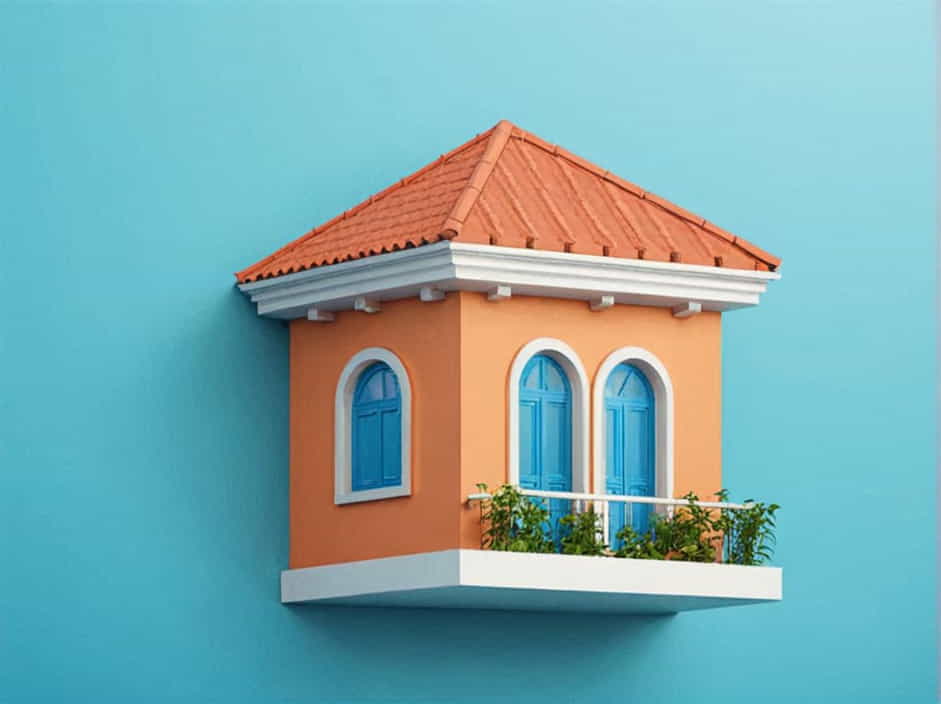Parapets have become an essential feature in modern Nigerian architecture, adding both aesthetic appeal and functional value to buildings. Whether for residential homes, commercial structures, or public buildings, modern parapet designs in Nigeria enhance the overall look of a property while offering protection from weather elements.
This topic explores popular parapet designs in Nigeria, their benefits, materials, installation process, and maintenance tips to help homeowners make the best choice for their buildings.
What is a Parapet?
A parapet is a low protective wall or barrier extending above the edge of a roof, balcony, or terrace. In Nigerian homes, parapets are commonly used as decorative elements that hide the roof, giving the building a more elegant and modern look.
Types of Modern Parapet Designs in Nigeria
1. Flat Parapet Design
This is a simple and minimalist design, where the parapet wall is flat and level with the roofline. It is common in modern and contemporary homes, giving the building a clean and sleek appearance.
2. Stepped Parapet Design
A stepped parapet features graduated levels, creating a unique architectural appeal. This design is often used in luxury homes and commercial buildings to add an eye-catching effect.
3. Curved Parapet Design
Curved parapets bring softness and elegance to a building. They are commonly seen in Mediterranean-style homes and high-end real estate developments in Nigeria.
4. Ornamental Parapet Design
This type of parapet includes decorative moldings, railings, or carved elements. It is popular in classic and colonial-style homes where intricate detailing is required.
5. Sloping Parapet Design
Designed with a slanting or sloped finish, this parapet is often used in homes with modern and futuristic architectural styles. It provides a dynamic and bold look.
6. Embellished Parapet with Cornices
This style features added cornices and trims for a more luxurious appearance. It is widely used in government buildings, hotels, and high-end residences.
Benefits of Modern Parapet Designs in Nigeria
1. Aesthetic Appeal
A parapet enhances the overall look of a building by concealing the roof edges, giving the structure a more sophisticated and polished appearance.
2. Protection from Weather Elements
Parapets prevent water from flowing directly down the walls, reducing the risk of wall stains and damage caused by heavy rainfall.
3. Enhanced Safety
For buildings with rooftop terraces or balconies, a parapet provides added safety by acting as a protective barrier against accidental falls.
4. Energy Efficiency
Modern parapets reduce direct sunlight exposure on the roof, helping to keep indoor temperatures cooler and lowering energy costs.
5. Structural Integrity
Parapets help to reinforce the roof structure, making it more resistant to harsh winds and extreme weather conditions.
Best Materials for Parapet Designs in Nigeria
1. Concrete Parapets
-
Most common material for parapets in Nigeria
-
Durable, strong, and fire-resistant
-
Can be molded into different shapes for decorative effects
2. Brick Parapets
-
Classic and elegant look
-
Provides insulation against heat
-
Often used in traditional and colonial-style buildings
3. Aluminum Parapets
-
Lightweight and corrosion-resistant
-
Modern and sleek appearance
-
Low maintenance compared to concrete or brick
4. Glass Parapets
-
Contemporary and stylish design
-
Common in luxury homes, offices, and hotels
-
Provides unobstructed views while ensuring safety
5. Steel Parapets
-
Strong and durable
-
Can be designed with ornamental patterns
-
Common in commercial and industrial buildings
Where to Use Parapet Designs in Nigeria
1. Residential Homes
Modern parapet designs are widely used in bungalows, duplexes, and mansions to create a stylish roof finish.
2. Commercial Buildings
Office complexes, shopping malls, and hotels use parapets to enhance building aesthetics and provide additional branding space.
3. Rooftop Gardens and Terraces
Parapets increase safety for rooftop recreational areas, making them ideal for restaurants, lounges, and event spaces.
4. Public and Government Buildings
Parapets are commonly used in government institutions, schools, and religious centers to provide structural balance and an impressive facade.
Installation Process of Parapets in Nigeria
1. Planning and Design Selection
-
Choose the right parapet style based on the building’s architectural theme.
-
Determine the height and thickness of the parapet.
2. Material Preparation
-
Use quality concrete, bricks, or steel reinforcements to ensure durability.
-
Waterproofing materials should be included to prevent leaks and cracks.
3. Construction and Reinforcement
-
Metal reinforcements are embedded in concrete parapets to improve strength.
-
Bricks and aluminum parapets must be securely fixed to the building’s structure.
4. Finishing and Painting
-
Smooth finishing is applied to enhance the appearance.
-
Waterproof paints or coatings are used to protect against weather damage.
Maintenance Tips for Parapets in Nigeria
1. Regular Cleaning
- Dust, dirt, and mold should be cleaned periodically to maintain the aesthetic appeal.
2. Inspect for Cracks and Water Damage
- Check for cracks in concrete parapets and repair them immediately to prevent leaks.
3. Repainting and Sealing
- Waterproof paints should be reapplied every few years to protect against rain and sun damage.
4. Strengthening Weak Areas
- Metal parapets should be checked for rust, and necessary reinforcements should be made.
Modern parapet designs in Nigeria have evolved beyond just functionality—they now serve as essential elements of a building’s aesthetics. With different styles like flat, stepped, curved, and ornamental parapets, homeowners can enhance the look of their properties while enjoying benefits such as protection, security, and energy efficiency.
Choosing the right materials and proper installation techniques will ensure a long-lasting and durable parapet that complements the beauty of any Nigerian home or commercial building.
